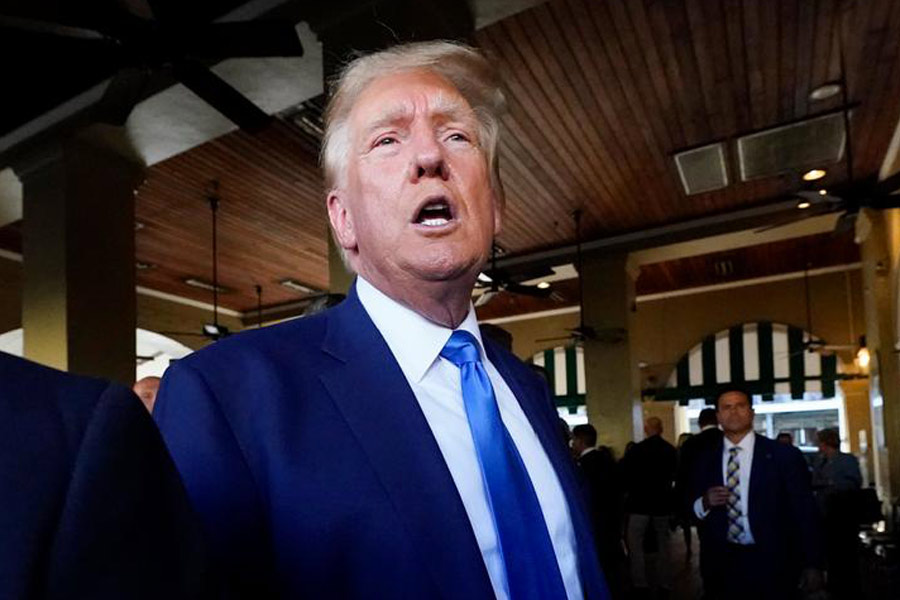Federal prosecutors on Thursday added major accusations to an indictment charging former President Donald J. Trump with mishandling classified documents after he left office, presenting evidence that he told the property manager of Mar-a-Lago, his private club and residence in Florida, that he wanted security camera footage there to be deleted.
The new accusations were revealed in a superseding indictment that named the property manager, Carlos De Oliveira, as a new defendant in the case. He is scheduled to be arraigned in Miami on Monday.
The original indictment filed last month in the Southern District of Florida accused Trump of violating the Espionage Act by illegally holding on to 31 classified documents containing national defence information after he left office. It also charged Trump and Walt Nauta, one of his personal aides, with a conspiracy to obstruct the government’s repeated attempts to reclaim the classified material.
The revised indictment added three serious charges against Trump: attempting to “alter, destroy, mutilate, or conceal evidence”; inducing someone else to do so; and a new count under the Espionage Act related to a classified national security document that he showed to visitors at his golf club in Bedminster, New Jersey.
The updated indictment was released on the same day that Trump’s lawyers met in Washington with prosecutors in the office of the special counsel, Jack Smith, to discuss a so-called target letter that Trump received this month suggesting that he might soon face an indictment in a case related to his efforts to overturn the results of the 2020 election.
Prosecutors under Smith had been investigating De Oliveira for months, concerned, among other things, by his communications with an information technology expert at Mar-a-Lago, Yuscil Taveras, who oversaw the surveillance camera footage at the property. That footage was central to Smith’s investigation into whether Nauta, at Trump’s request, had moved boxes in and out of a storage room at Mar-a-Lago to avoid complying with a federal subpoena for all classified documents in the former President’s possession. Many of those movements were caught on the surveillance camera footage.
The revised indictment said that in late June of last year, shortly after the government demanded the surveillance footage as part of its inquiry, Trump called De Oliveira and they spoke for 24 minutes.
Two days later, the indictment said, Nauta and De Oliveira “went to the security guard booth where surveillance video is displayed on monitors, walked with a flashlight through the tunnel where the storage room was located, and observed and pointed out surveillance cameras”.
A few days after that, De Oliveira went to see Taveras, who is identified in the indictment as Trump Employee 4, and took him to a small room known as an “audio closet”. There, the indictment said, the two men had a conversation that was meant to “remain between the two of them”.
It was then that De Oliveira told Taveras that “‘the boss’ wanted the server deleted”, the indictment said, referring to the computer server holding the security footage.
Taveras objected and said he did not know how to delete the server and did not think he had the right to do so, the indictment said. At that point, the indictment said, De Oliveira insisted again that “the boss” wanted the server deleted, asking, “What are we going to do?”
A statement attributed only to the Trump campaign called the new accusations a “desperate and flailing attempt” by the justice department to undercut him.
The indictment contains an additional charge related to a classified document — a battle plan related to attacking Iran — that Trump showed, during a meeting at his Bedminster golf club, to two people helping his former White House chief of staff Mark Meadows write a book.
New York Times News Service










